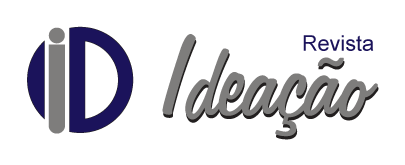QUEM É SHAKESPEARE? SEUS TRÊS PILARES FORMATIVOS COMO PRINCIPAIS CONTRIBUTOS À SUA GENIALIDADE
DOI:
https://doi.org/10.48075/ri.v20i2.23567Keywords:
Shakespeare, Formação, Família, Grammar School, Homilias Dominicais.Abstract
Passados 400 anos da morte de Shakespeare, ainda temos muitas lacunas a preencher sobre o mais importante autor do período elisabetano. Suas obras sempre se revelam como mananciais e as leituras e interpretações que podemos fazer a partir delas são inesgotáveis. Surge então a questão: quem é o autor por trás de toda essa riqueza? No presente artigo, abordamos os três pilares formativos do jovem William: sua família, sua educação na Grammar School e o teor político contido nas homilias dominicais de seu tempo. Posteriormente, relacionamos esses pilares com quatro de suas peças, as grandes tragédias: Hamlet, Macbeth, Otelo e Rei Lear. O tema proposto será abordado a partir de obras da maior especialista brasileira em Shakespeare, a professora e crítica de teatro, Bárbara Heliodora; um dos mais expressivos professores de Yale e atualmente um dos grandes especialistas em Shakespeare, Harold Bloom; e ainda, o professor e tradutor, Pedro Süssekind. Como resultado, apresentaremos que, mesmo sendo dotado de uma grande genialidade e sua curiosidade não tenha limites, muito do sucesso do bardo é devido a sua época e as influências que recebeu.
Downloads
Published
How to Cite
Issue
Section
License
Authors who publish in this journal agree with the following terms:
1. Authors maintain copyright and grant the journal the right of first publication, with the work simultaneously licensed under the Creative Commons Attribution License that allows the sharing of the work with recognition of authorship and initial publication in this journal.
2. Authors are authorized to assume additional contracts separately, for non-exclusive distribution of the version of the work published in this journal (e.g., to publish in an institutional repository or as a book chapter), with acknowledgment of authorship and initial publication in this journal.
3. Authors are allowed and encouraged to publish and distribute their work online (e.g., in institutional repositories or as a personal page) at any point before or during the editorial process, as this may generate productive changes, as well as increase the impact and citation of the published work (See The Effect of Free Access).
Creative Commons License
This work is licensed under a Creative Commons Attribution-Noncommercial-ShareAlike 4.0 International License, which permits sharing, copying, distributing, displaying, reproducing, the whole or parts provided it has no commercial purpose and the authors and source are cited.


